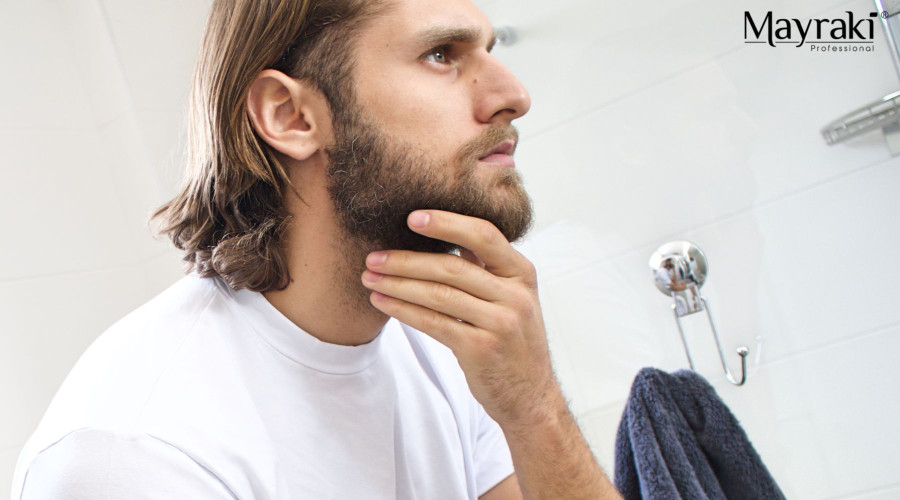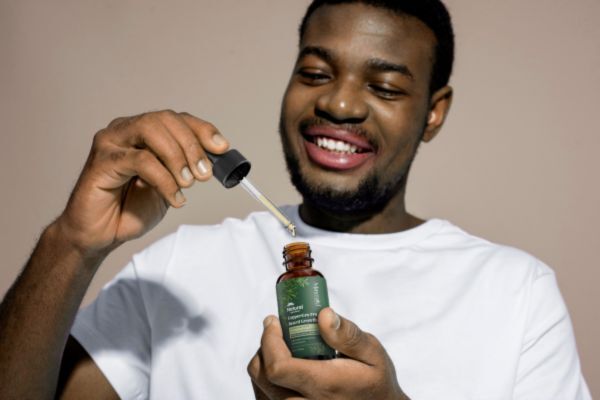Why pH Balance in Beard Wash Matters for Your Beard and Skin Health
Jul 09, 2025 | By Maria Eliza Pineda

pH balance is one of the most crucial yet often overlooked aspects of beard care. When your beard wash doesn’t match your skin’s natural pH level, it can lead to irritation, itchiness, and beard dandruff. Thankfully, many modern grooming products now focus on pH-balanced formulations to support the health of both your skin and facial hair.
We’ll explain how pH affects your face and beard, why it's essential to choose products that align with your skin's biology, and how to build a complete grooming routine around that. We’ll also explore signs your current product may be too harsh, usage recommendations, and why Mayraki Professional offers one of the best pH-optimized beard care options available.
What Is pH and What Does It Have to Do With Your Face?
Understanding the Meaning of pH
pH, or “potential of hydrogen,” is a scale that measures how acidic or alkaline a substance is. The pH scale ranges from 0 to 14 - 7 is neutral, below 7 is acidic, and above 7 is alkaline. For skin, the ideal pH is between 4.5 and 6.0, which is slightly acidic.
Why pH Balance Is Important for Facial Skin
Facial skin is thinner and more sensitive than other parts of the body. It naturally has an acid mantle, a protective barrier made of sebum and sweat. This acid mantle defends against bacteria, fungi, and environmental irritants. When disrupted - often by high-pH products - skin can become dry, red, or break out.
The Role of pH in Beard Health
Maintaining the right pH isn’t only crucial for skin, it also impacts the health of hair follicles. If your beard wash disrupts this balance, it may inflame or weaken follicles, leading to slower or patchy beard growth. pH-balanced products help create a stable foundation for healthier facial hair.
Is Regular Shampoo Bad for Your Beard?
Why You Shouldn’t Use Hair Shampoo on Your Beard
Shampoos are formulated for the scalp not your face. Most have alkaline pH levels ranging from 7 to 9 and contain strong surfactants like sulfates. While effective for cleaning scalp hair, they’re far too harsh for facial skin and beard hair.
Effects of Shampoo on Your Beard
Using regular shampoo on your beard can strip away natural oils, resulting in dryness, irritation, and beard dandruff. It removes the sebum that keeps skin and facial hair moisturized and protected. Over time, it can cause brittle, frizzy, or weak beard strands.
Facial Skin vs. Scalp Skin
Facial skin is much more delicate than scalp skin. It has fewer sebaceous glands and a thinner epidermis, making it more prone to irritation. That’s why products designed for scalp use shouldn't be applied to your face, especially if you care about beard health.
Benefits of Using a pH-Balanced Beard Wash

Cleaner Skin Without Dryness
A pH-balanced beard wash uses mild surfactants to cleanse without disrupting your skin’s natural barrier. It effectively removes dirt and oil without stripping essential moisture. This helps keep your skin hydrated and irritation-free.
Reduces Beard Itch and Dandruff
When the skin beneath your beard stays balanced and moisturized, there's less risk of itchiness and flaking. A pH-balanced wash soothes irritation and helps prevent beardruff by keeping your acid mantle intact.
Encourages Fuller, Healthier Beard Growth
Balanced pH supports healthy hair follicles, which in turn encourages thicker and more even beard growth. When follicles are calm and pores are clear, beard hair can grow stronger, softer, and more resilient over time.
Key Ingredients to Look For in a pH-Balanced Beard Wash
Gentle Cleansing Agents
Look for mild surfactants like coco betaine, decyl glucoside, sodium cocoyl methyl taurate, or soapberry. These clean effectively without over-drying your skin, making them safer for daily or regular use on sensitive areas like the face.
Moisturizing and Soothing Additives
Ingredients such as glycerin, panthenol, and aloe vera help retain moisture and reduce inflammation. They nourish both skin and hair, preventing dryness and promoting overall comfort.
What to Avoid in Beard Wash
Avoid formulas that contain sulfates, parabens, or synthetic fragrances. These harsh chemicals can irritate sensitive facial skin and disrupt the natural skin microbiome. Always check the ingredient list before purchasing.
How Often Should You Use Beard Wash and How Should You Use It?
Ideal Washing Frequency for Beards
Beard wash doesn’t need to be used daily unless you're exposed to pollution, heavy sweat, or dirt. In most cases, 2 to 3 times per week is enough to keep your beard clean and healthy without over-cleansing.
Proper Beard Washing Technique
Start by wetting your beard with lukewarm water. Apply a small amount of beard wash to your hands and gently massage it into both your facial hair and the skin underneath. Rinse thoroughly to avoid product buildup and dryness.
Post-Wash Beard Care
After rinsing, pat your beard dry with a soft towel. Follow up with a beard oil or balm to lock in moisture and protect the strands. We recommend the Mayraki CopperGro Pro Beard Growth Oil to nourish and support long-term beard health.

Signs Your Beard Wash May Be Too Harsh
Flaking or Skin Peeling
If you notice flaking, peeling, or dry patches under your beard, this could be a sign of an overly alkaline product. These symptoms suggest your acid mantle has been stripped, leading to compromised skin health.
Itching or Redness After Washing
Persistent itching or a tight, stinging sensation after cleansing is a red flag. Your wash may be too strong and cause irritation or damage to your skin barrier.
Dull or Coarse Beard Texture
When your beard starts to feel rough, brittle, or loses its shine, it may be due to lost natural oils. Over time, this can make facial hair more prone to breakage and poor growth.
A Complete pH-Balanced Beard Care Routine
Step 1: Cleanse with a Gentle Beard Wash
Use a pH-balanced beard wash to remove dirt, sweat, and excess oil without damaging your skin’s acid mantle. This sets the stage for healthy hair growth.
Step 2: Moisturize with Beard Oil
Apply beard oil after washing to hydrate your beard and soften the hair. It also soothes the skin underneath, preventing tightness or dryness.
Step 3: Protect with Balm or Leave-In Conditioner
Use a beard balm or conditioner to seal in moisture and guard against harsh elements like wind and sun. This extra layer of protection helps maintain softness throughout the day.
Step 4: Exfoliate Once a Week
Gently exfoliate the skin beneath your beard once a week to remove dead skin cells and prevent clogged pores. Use a beard-friendly exfoliator or soft brush.
Beard Wash FAQs: What You Need to Know
What Is the Best pH Range for Beard Wash?
The ideal pH range is between 4.5 and 6.0, which aligns with the natural pH of facial skin. This ensures minimal disruption to your skin’s protective barrier.
Can I Use Regular Shampoo on My Beard?
No. Regular shampoos are too harsh and often too alkaline for facial skin. They strip away beneficial oils and damage both skin and facial hair over time.
How Can I Tell If a Product Is pH-Balanced?
Check the product label. Some brands indicate the pH level on the packaging. You can also use pH test strips to measure it manually if needed.
Should I Use Beard Wash Every Day?
Not necessarily. Unless you’re dealing with heavy sweat or pollution, washing 2–3 times per week is usually sufficient for beard hygiene and health.
Protect Your Beard Through Proper pH Balance
Choosing the right pH-balanced beard wash is more than just a comfort upgrade, it’s a long-term investment in your skin and beard health. By avoiding harsh chemicals and aligning with your skin’s natural pH, you reduce the risk of irritation, flakes, and poor growth.
If you’re ready to level up your grooming game, explore the Mayraki Beard Care Range, formulated to be gentle, non-stripping, and skin-friendly. Whether you’re starting your beard journey or maintaining a full-grown mane, pH-optimized care makes all the difference.




